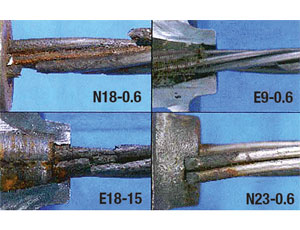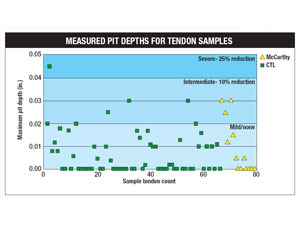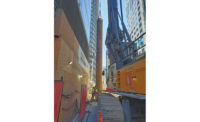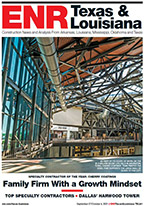In the latest round of a heated dispute between McCarthy Building Cos. Inc. and the owner of the distressed McGuire Apartments, a 25-story tower in Seattle, the St. Louis-based contractor maintains the concrete frame’s corroding post-tensioned slab system can be fixed for less than $2 million. McCarthy calls the local owner’s refusal to make “simple” repairs, its ejection of tenants and its proposed dismantling of the nine-year-old building “irresponsible acts.”

The owner, Carpenters Tower LLC, responded through a local adviser. “Nothing McCarthy has proposed will arrest the corrosion, which already has progressed inboard of the anchor wedges,” says Brian J. Urback, vice president of Kennedy Associates Real Estate Counsel LP.
McCarthy has not addressed other construction defects that are “extremely expensive” to repair, he charges. These include improperly installed or missing reinforcing steel, concrete delamination and inadequate concrete cover.
The owner says it has spent $12 million to date on repairs. It estimates a $34 million to $44 million cost to fix the post-tensioning system and $22 million to repair the other problems.
The frame has a two-way, unbonded post-tensioned slab system. Only 22 of 272 apartments remain occupied. An application for a demolition permit has been submitted, says Urback.
McCarthy says there is “no sound engineering basis” for the building to be vacated or demolished. Its claim is based on findings of its investigators, submitted on April 29 and May 6 to Jonathan C. Siu, chief engineer of Seattle’s Dept. of Planning & Development (DPD).
Carpenters Tower also submitted to DPD, on April 22. Siu declined comment until after he responds to both parties.
An analysis “demonstrates that the building’s post-tensioning system tensile strength is significantly above the building code and design requirements,” says the report, submitted by Randall W. Poston, a principal with structural engineer Whitlock Dalrymple Poston & Associates PC, Austin, as well as Richard O. Lewis, Brian B. Hope and Kenneth B. Bondy.
The building will be safe for years even without repairs, with “little to no risk” that corrosion will cause a tendon failure in the next two years, says the letter.
There have been no tendon failures, says McCarthy. The owner’s proposed “wholesale replacement” of tendons as the only fix option is unprecedented, it adds.
Under an investigation protocol, 95 tendons, including “live-end” anchorages and several feet of strand, were removed for joint study. These included 15 by McCarthy’s expert team and 80 by the owner’s expert team, including CTLGroup, Skokie, Ill., and the owner’s local construction adviser, OAC Services Inc.
McCarthy’s letter says CTL used a tendon-evaluation rating system “intended solely for new construction in a bonded, post-tensioned system with emphasis on the fatigue life of strands, as would be experienced by pre-tensioned bridge girders subjected to thousands of cycles per day of truck loading.”
McCarthy’s team compared the McGuire to Florida’s Seaquay Condominium system, built in the mid-1980s, which also had problems. Tendons and wedges tested to failure from both buildings showed the same type of shear fracture of a single wire, but the sample from the Seattle building is less corroded and has a greater tensile strength, says the letter. Seaquay was “successfully repaired more than 15 years ago and remains in service,” say McCarthy’s experts.
To repair the McGuire, McCarthy’s team recommends removing corrosion by sandblasting metal surfaces of anchorages, wedges and strand tails. Grout pockets should be repacked with nonshrink grout prepared and cured per specifications. An elastomeric coating over the concrete surface and grout pockets should be applied to provide another barrier to oxygen and water. As a precaution, the team recommends installing an acoustic monitoring system to locate a wire, if one fails.






Post a comment to this article
Report Abusive Comment